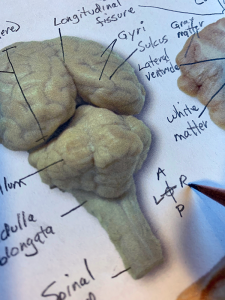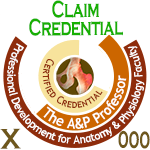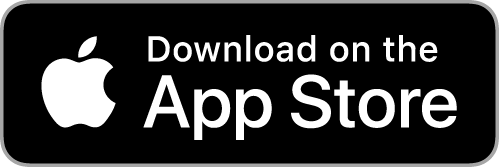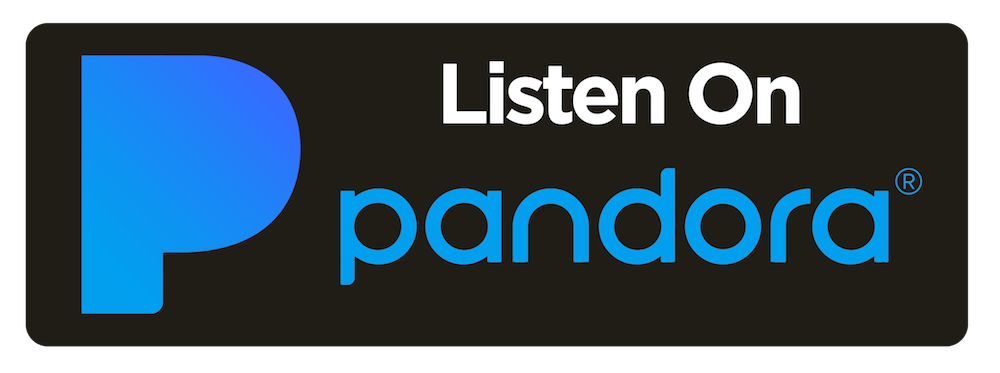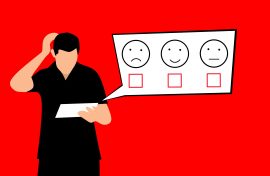The Last Best Story in Teaching Anatomy & Physiology
TAPP Radio Episode 37
Quick Take
01:17 | Feedback in Online Tests
08:17 | The Anatomical Compass
14:47 | Sponsored by AAA
15:12 | Reserve hematopoiesis
18:09 | Sponsored by HAPS
18:54 | Featured: Last Best Story in Adult Neurogenesis & ANS Pathways
Listen Now!
Want to listen to this episode’s Preview (with additional content)?
Scientific theories are tested every time someone makes an observation or conducts an experiment, so it is misleading to think of science as an edifice, built on foundations. Rather, scientific knowledge is more like a web. The difference couldn’t be more crucial. A tall edifice can collapse – if the foundations upon which it was built turn out to be shaky. But a web can be torn in several parts without causing the collapse of the whole. The damaged threads can be patiently replaced and re-connected with the rest – and the whole web can become stronger, and more intricate. (Massimo Pigliucci)
1 | Feedback in Online tests
7 minutes

- Big Year in Anatomy & Physiology Teaching with The A&P Professor | Episode 36
- Here’s a tool I use for repeated feedback (saves a LOT of time):
- Sign up for TextExpander. Recall your best words. Instantly, repeatedly.
- We want your feedback!
- 1-833-LION-DEN or 1-833-546-6336
- podcast@theAPprofessor.org
- @theAPprofessor (Facebook, Twitter, Instagram, Pinterest, and beyond)
2 | The Anatomical Compass
Although you and I are comfortable in orienting ourselves to anatomical directions when looking at diagrams, photographs, and specimens in anatomy, our beginning student often are not. The simple process of adding an “anatomical rosette” reflecting the anatomical directions in each encountered diagram can help students develop the skill of understanding anatomical perspective.
3 | Sponsored by AAA
0.5 minutes
The searchable transcript for this episode, as well as the captioned audiogram of this episode, are sponsored by The American Association of Anatomists (AAA) at anatomy.org. Their big meeting is in April at the Experimental Biology (EB) meeting in Orlando FL. Check it out!
4 | Reserve Hematopoiesis
3 minutes
 Hematopoietic stem cells (HSCs) may have a “back-up system” that helps out after damage to the working population. These “reserve” HSCs (rHSCs) may step up when the primed HSCs (pHSCs) cannot keep up with the demand for hematopoiesis.
Hematopoietic stem cells (HSCs) may have a “back-up system” that helps out after damage to the working population. These “reserve” HSCs (rHSCs) may step up when the primed HSCs (pHSCs) cannot keep up with the demand for hematopoiesis.
- Scientists have identified a bone marrow backup system (summary article) my-ap.us/2BmcoE0
- N-Cadherin-Expressing Bone and Marrow Stromal Progenitor Cells Maintain Reserve Hematopoietic Stem Cells
(report by Zhao, et al. in Cell Reports) my-ap.us/2Bk7vLN
5 | Sponsored by HAPS
0.5 minutes
 The Human Anatomy & Physiology Society (HAPS) is a sponsor of this podcast. Did you know there’s a one-day regional HAPS conference in March? Check it out. You can help appreciate their support by clicking the link below and checking out the many resources and benefits found there.
The Human Anatomy & Physiology Society (HAPS) is a sponsor of this podcast. Did you know there’s a one-day regional HAPS conference in March? Check it out. You can help appreciate their support by clicking the link below and checking out the many resources and benefits found there.
6 | Featured: Last Best Story in Adult Neurogenesis & ANS Pathways
12 minutes

- Storytelling is the Heart of Teaching A&P | Episode 12 (where I introduce the idea of teaching as storytelling)
- Adult neurogenesis in the brain
- Running Concept Lists Help Students Make Connections | Episode 8 (where I first discuss this story)
- The Discovery of the Neuron (outlines the origin of central dogmas about neuroscience, including Ramón y Cajal’s role)
- Neurogenesis in the adult human hippocampus (paper that established the idea that adult brain neurogenesis does occur)
- Human hippocampal neurogenesis drops sharply in children to undetectable levels in adults (paper that challenges the idea of adult brain neurogenesis)
- New Study Questions Confidence in Neurogenesis in the Adult Brain (article that summarizes the recent controversy)
- Are Learning Styles Real? Why or Why Not? | Episode 14 (where I bring up newer research on adult neurogenesis)
- New Evidence Suggests Aging Brains Continue to Make New Neurons (article by Francis Collins on the new paper)
- Human Hippocampal Neurogenesis Persists throughout Aging (new research paper in Cell)
- The last best story in adult neurogenesis?
- A New Look at Neurogenesis in Humans (blog post by Neuroskeptic, summarizing new perspectives) my-ap.us/2TDxTXU
- Recalibrating the Relevance of Adult Neurogenesis (article by Jason S. Snyder in Trends in Neurosciences) my-ap.us/2TEb5r4
- Running Concept Lists Help Students Make Connections | Episode 8 (where I first discuss this story)
- Are sacral autonomic pathways sympathetic or parasympathetic?
- Sacral Efferent Pathways are Sympathetic, Not Parasympathetic (summary from The A&P Professor blog) my-ap.us/2TJMHnS
- The sacral autonomic outflow is sympathetic (I. Espinosa-Medina, O., et al., of J.-F. Brunet lab’s in Science the proposed change; includes an updated version of the classic diagram of sympathetic and parasympathetic pathways) my-ap.us/2fNdcF3
- Neural circuitry gets rewired (Adameyko, I. in Science comments on the report cited above, stating that “This finding provokes a serious shift in textbook knowledge, and, as with any fundamental discovery, it brings important practical implications…” and goes on to mention of a few of the implications (e.g., how to treat bladder dysfunction) my-ap.us/2gg9O8P
- The Autonomic Nervous System. Part I. (John Newport Langley’s classic “primary source” that codified the modern concept of the ANS.) my-ap.us/2fYHt3M
- The sacral autonomic outflow is parasympathetic: Langley got it right (John P. Horn’s commentary in Clinical Autonomic Research; the last best story?) my-ap.us/2TCvwF5
- Sacral Efferent Pathways are Sympathetic, Not Parasympathetic (summary from The A&P Professor blog) my-ap.us/2TJMHnS
This podcast is sponsored by the
Human Anatomy & Physiology Society

Stay Connected
The easiest way to keep up with new episodes is with the free mobile app:


Or you can listen in your favorite podcast or radio app.
Click here to be notified by blog post when new episodes become available (make sure The A&P Professor option is checked).
Transcript
To read a complete transcript of this episode,
click here.
The searchable transcript for this episode is sponsored by
The American Association of Anatomists.

Call in
Record your question or share an idea and I may use it in a future podcast!
Toll-free:
1·833·LION·DEN
(1·833·546·6336)
Local:
1·636·486·4185
Email:
podcast@theAPprofessor.org
Share

Preview of Episode 38
Host Kevin Patton previews the content of the upcoming full episode, which features a discussion of how mid-term check-ins can help in teaching A&P. There’s more… some listener feedback, word dissections, and recommendations from The A&P Professor Book Club.
Topics
1 minute
- Sperm speed
- Hematopoiesis in the gut
- How long does a Lego take to get through the alimentary canal?
- We have a new sponsor? Who is it?
- Mid-Semester Check-Ins Keep Your A&P Course on Track
Listener Feedback
2.5 minutes
Listener Charlie Taylor has feedback on how he handles incorrect student answers after a test.
Word Dissections
4.5 minutes
- Chimerism
- Allograft
- Progenitor cell
Kevin’s Unofficial Guide to the Annual HAPS Conference
1.5 minutes
I need your help for the next edition of Kevin’s episode on getting ready for the HAPS conference.
- Questions
- Your own experiences
- What you’ve taken away from HAPS conferences
- Tips and advice (especially secret, superlative tips from longtimers)
I need a bit of SOUND from you. Call in or send a recording! (but text is okay, too)
Book Club
3.5 minutes
- Small Teaching: Everyday Lessons from the Science of Learning
- by James Lang
- amzn.to/2Em0FY3
- Check out The A&P Professor Book Club
Last updated: December 30, 2020 at 10:39 am
